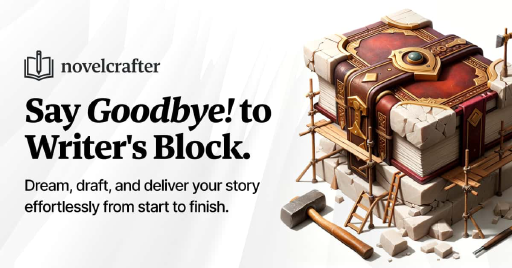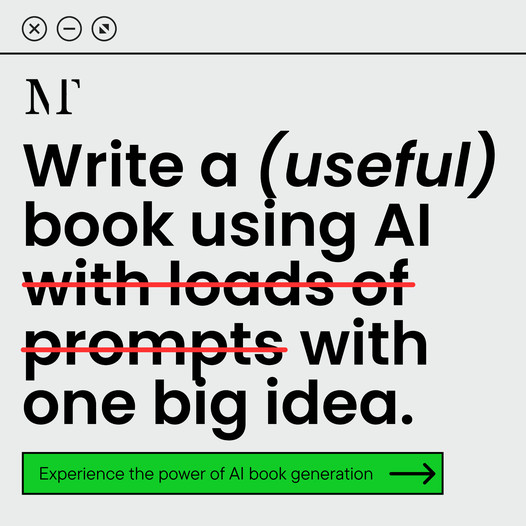Crafting a Compelling Plot
Any storyteller worth their salt knows: the heart of a great story lies in its plot. It’s what keeps readers hooked, giving both character arcs and themes a solid stage to unfold. Here’s the lowdown on building the bones of your tale, along with why you need a good dose of conflict to make it all zing.
Elements of a Strong Plot
Start by hammering out these building blocks to create a plot that holds water and keeps folks reading till the cows come home:
-
Exposition: This is your chance to lay the groundwork. Who’s in this story, where’s it going down, and what’s kicking things off? Give the readers a nice intro and watch them settle in comfortably.
-
Rising Action: Throw some curveballs in there. As characters dodge life’s wrenches, the tension builds, dragging readers deeper into the tale’s web.
-
Climax: Here’s the crescendo of your story—the big event where everything comes to a head. It can make or break your characters’ fate and sends the story racing in a new direction.
-
Falling Action: This is the fallout zone. We see the dust settling from the climax, finding out who’s picking up the pieces and who’s left in the rubble.
-
Resolution: Time to wrap it up nicely. Tie those dangling plot threads together and offer some closure to the journeys and changes we’ve seen.
Master these parts to craft a storyline that holds its own. Need an extra hand? Have a glance at our handy guide on how to outline a story.
Incorporating Conflict
Let’s talk friction. Conflict is that sneaky little spark that lights a story on fire, keeping it alive and kicking. Here are the usual suspects when it comes to types of conflict:
| Type of Conflict | What’s the Gist |
|---|---|
| Character vs Self | The inner tug-of-war or moral pickle they’re in. |
| Character vs Character | Two or more folks just can’t see eye-to-eye. |
| Character vs Nature | Battling an avalanche, a storm, or even a mean old neighbor’s dog. |
| Character vs Society | Uphill battle against the rules and what-have-yous. |
A good heap of conflict breathes life into stories, stacking up hurdles for your heroes to leap over. As readers cheer or groan along with these attempts, the bond deepens. Our pals at Writers.com reckon that what characters chase should be just out of reach to keep things spicy.
Pitting characters against conflict isn’t just drama for drama’s sake. It molds them, polishing their facets until they shine. Their battles give readers a front-row seat to their personal metamorphosis—right there with them through the mud, grit, and ultimate triumph Jericho Writers.
So, keep that conflict dial cranked up for a rollercoaster read. And if you’re itching to flex those creative muscles, try out some of our creative writing exercises to punch up your storytelling game.
Developing a Gripping Setting
So, you’re cooking up a story, and you’d better believe that the setting is just as important as the plot twist or the heartbreaker protagonist. Whether it’s a dusty old town or a swanky modern city, the setting does more than just sit in the background—it plays a major role in making your tale come alive. This part will noodle on why setting description matters and how it pumps life into your story’s vibe.
Importance of Setting Description
Now, imagine trying to paint without a canvas. Sounds tricky, right? That’s your story without a well-thought-out setting! It’s not just about when and where things happen; it’s also about adding layers to your tale, making your plot, people, and drama all the more interesting (SelfPublishing.com). It’s like the invisible hand that nudges how folks act and what gets their gears grinding.
When you’re piecing together your world, chew on these aspects:
 What Poetry Feels Like
What Poetry Feels Like| Element | What’s the Deal? |
|---|---|
| Location | We’re talking GPS coordinates, the nitty-gritty ground where it all happens. |
| Time Period | Think past, present, or future—heck, even time travel—but it affects the whole vibe. |
| Cultural Context | What’s normal in your world? What rules the roost and gets people talking? |
| Atmosphere | The vibes, man! Is it spooky, cozy, or halfway between a rock and a hard place? |
Take a murder story hanging out in a sketchy corner of Chicago, for instance. It sets up just the right amount of grit and guesswork, providing fertile ground for juicy mysteries to unfurl (SelfPublishing.com). Pin down those little details and watch your backdrop morph into something your audience can’t ignore.
Enhancing the Mood
Your setting isn’t just wallpaper for the action; it’s the mood-setter, the vibe-vendor. It can crank up the tension or mellow things out. Picture a raging storm ramping up suspense or a golden afternoon casting a soothing calm.
To amp up the mood, slice in some sensory details. These bad boys lavish the reader’s senses:
| Sense | Descriptive Style |
|---|---|
| Sight | Spice things up with a splash of color and the play of light. |
| Sound | Hello, auditory delights—think honking cars or whispering winds. |
| Smell | Breathe life with aromas—fresh bread or wet asphalt, anyone? |
| Touch | Feel the feels through textures—cool breezes or sunlit warmth. |
| Taste | Flavor the scenes with salty ocean spray or rich chocolate. |
Drench the scene in vivid imagery, pulling readers into the heart of your tale. Nail a knockout setting, and you’re not just spinning a yarn; you’re crafting an experience that’s worth sticking around for. For a heap of pointers on fleshing out authentic settings, swing by our guide on how to create believable settings.
Building Memorable Characters
Imagine getting lost in a story where characters leap off the page and linger in your mind long after you’ve stopped reading. Crafting characters like these is what hooks readers and keeps the plot rolling. Here, you’ll pick up some nifty tricks for breathing life into your characters and adding some sizzle to your storytelling skills.
Creating Dynamic Characters
Dynamic characters are the folks who don’t just exist; they grow, evolve, and experience a bucket load of change throughout the narrative. They’re often caught up in a mix of internal and external battles that push them up against their own fears and foibles. Watching them squirm and adapt makes them all the more human and, well, interesting!
Start by giving these chaps a genuine makeover:
- Motivations: What’s driving your character to get up in the morning (besides the smell of pancakes)? A clear motivation sets off a chain of actions that’ll keep readers on their toes.
- Flaws: A bit of vulnerability makes them three-dimensional and easier to root for.
- Growth Arc: Sketch out how your character morphs from start to finish, ensuring their journey is twisted and changed by the struggles they encounter.
Character Development Techniques
Got your hero in mind? Great. Now let’s flesh them out with some smart techniques:
-
Character Profiles: Pull together detailed profiles for each of your main characters. List key details, like their age, quirks, and what makes them tick. This helps nail down consistency in how they chat, think, and react.
-
Backstory: Dive into their past. Pin down events or moments that made them who they are today. Those memories are like breadcrumbs leading to why they act a certain way.
-
Internal Conflicts: Use the mental tug-of-war to spice things up. Let them struggle between their dreams and demons, creating arcs that keep pages turning.
-
Relationships: Puppet some interactions that lift the curtain on their real selves. The way they gel—or clash—with others can uncover hidden sides.
-
Dialogue: Get their voices down. Each character should sound as unique as a fingerprint. Their speech should reflect their past, giving readers clues without spilling the beans.
Here’s a little cheat sheet:
| Technique | How It Helps |
|---|---|
| Character Profiles | Maps out key traits and goals |
| Backstory | Connects history to current motivations |
| Internal Conflicts | Adds rich layers to desires vs. fears |
| Relationships | Uses interactions to display quirks and qualities |
| Dialogue | Tailors conversation to reveal character’s essence |
By rolling out these techniques, you pave the way for unforgettable personas that grab attention and breathe life into the plot. Looking for more? Check out our tips on crafting believable personalities and stirring emotions, guaranteed to elevate your writing game.
Choosing Plot-Driven vs Character-Driven
Deciding between plot-driven or character-driven storytelling is like picking your favorite ice cream flavor—each has its own charm and suits different moods. Whether you’re weaving tales of daring heists or digging into someone’s deepest thoughts, knowing the ins and outs of each style will set you on the right path for your writing adventure.
Plot-Driven Storytelling
Plot-driven tales are all about the action and excitement. Here, it’s the twists, turns, and drama that keep folks flipping those pages deep into the night. The characters are often at the mercy of the explosive events around them, reacting to the chaos and tension. This approach shines in genres like crime, thrillers, sci-fi, and mystery, where the thrill of the hunt or the ticking clock keeps hearts racing.
Think of Gone Girl by Gillian Flynn, The Lord of the Rings by J.R.R. Tolkien, or George Orwell’s 1984. These stories pull you in with their gripping plots, leaving you breathless in suspense. To flesh out how you can tackle a plot-driven narrative, take a peek at the table below:
| Element | Description |
|---|---|
| Focus | Action and external events |
| Character Development | Characters react to plot-driven events |
| Genre Suitability | Crime, thriller, sci-fi, mystery |
| Reader Engagement | Hooked by tension and intrigue |
To spice up your storytelling talents, check out ways to outline a story that takes readers on a wild, eventful ride.
Character-Driven Narrative
Character-driven stories breathe life into the emotional depths of their characters. Rather than surrounding them with nonstop chaos, these narratives explore what’s going on inside—motivations, changes, and subtle tussles of the heart and mind. Here, the characters steer the ship, while the plot sails quietly in the background.
With plots that are generally less complex, character-driven tales thrive in literary fiction, where the spotlight is on deep connections and personal growth. Dive into Harper Lee’s To Kill a Mockingbird to see how these stories resonate through their rich character studies. Here’s a handy breakdown of what to watch for in character-driven storytelling:
| Element | Description |
|---|---|
| Focus | Internal growth and character dynamics |
| Character Development | Shaped by personal triumphs and challenges |
| Genre Suitability | Literary fiction and character studies |
| Reader Engagement | Heartstrings are tugged by character depth and emotion |
Finding the sweet spot between plot and character can depend on what makes your heart sing. Each style brings something special, and playing around with them can add layers to your storytelling quilt, bringing your creative vision to life. Need some extra help? Dive into beginner writing tips or exercise your inner muse with creative writing exercises.
Aligning Setting with Plot
Making a plot hop off the page isn’t just about a gripping storyline—it’s about weaving in the setting seamlessly. A setting done right cranks up the story and makes everything gel together like a well-oiled machine.
Setting and Narrative Coherence
Your story’s backdrop gives readers the who, what, when, and where. It’s gotta jive with what’s going on, so the story feels rooted, like it could really happen. Picture this: a murder mystery in a gritty part of Chicago. The setting alone ramps up the suspense and believability just from its shady vibes.
When matching your setting to the story, chew on these:
- Keep It Relevant: Your setting should boost what the plot needs.
- Character Connection: The backdrop should fit who’s in your story. A city kid isn’t gonna feel right out in the sticks, are they?
- Mood Magic: Your setting sets the tone. A stormy night whispers suspense into the reader’s ear, while a sunlit meadow beams joy straight into the heart.
Nail these, and your setting’ll be the secret weapon enriching your plot and helping your characters pop.
Utilizing Sensory Details
To make your setting jump off the page, sprinkles of sensory details are the secret sauce. You wanna engage sight, sound, taste, touch, and smell to make the world you’re building feel as real as your own backyard.
| Sense | What to Describe |
|---|---|
| Sight | Colors, shapes, shadows |
| Sound | Chit-chat, nature’s song, urban hum |
| Taste | Savory bites, sweet nectar, tang |
| Touch | Warm stones, coarse fabric, the breeze |
| Smell | Fresh popcorn, dank mildew, a sea breeze |
Instead of a flat “It was raining,” crank it up: “Rain pelted the windows, turning city lights into a hazy smear against the gloom.” That paints a picture vivid enough that you can almost hear the rain.
Sensory details don’t just color in the lines of your setting—they link the mood to the plot and draw readers deeper in. Hungry for more tips? Shoot over to our piece on how to write better descriptions.
Get your setting nailed down with your story and splash in those sensory deets, and you’ve got yourself a recipe for a tale your readers will dive into and never wanna leave.
Resolving Conflicts and Crafting Endings
Who doesn’t love a good ending to a story? It’s what brings everything together, all those roller-coaster arcs and emotional highs. Nail that, and you’ve got readers finishing your book with a smile.
Conflict Resolution Strategies
Let’s talk about making conflicts in stories worth the emotional sweat:
-
Amp up the Drama: Get your readers’ hearts racing with suspense and uncertain outcomes. The more they’re biting their nails, the more they’ll savor that “aha!” moment when everything clicks into place.
-
Grow Your Characters: Every challenge is like gym for your characters—they get stronger, wiser, and sometimes surprise even themselves. Watch ’em face their demons and bloom, giving your reader front-row seats to a transformation (Jericho Writers).
-
Ride the Emotional Rollercoaster: Take readers on a ride from fear to triumph. Make them laugh, cry, maybe even throw the book across the room (but in a good way). Shared emotions build a deeper connection to your story (Jericho Writers).
-
Make a Difference: When conflicts wrap up, make sure there’s a shift—characters evolve and situations change. Without that, it’s like a sandwich with no filling (Jericho Writers).
Crafting a Satisfying Conclusion
Now, let’s tie everything up with an ending that feels like the last piece of a puzzle, snapping into place:
-
Show the Journey: Reflect quickly on how far your characters have come. It’s like looking at their ‘before’ and ‘after’ photos.
-
Wrap Up Those Conflicts: Don’t leave readers hanging; ensure big issues get resolved in ways that feel genuine. Your ending should be a sigh of satisfaction.
-
Think Beyond the Pages: Give readers something to ponder, like a theme or a moral that lingers long after they’ve turned the last page.
-
Leave the Door Ajar: Sometimes, a hint of what might happen next can be just as intriguing—allow readers to dream a bit further.
-
Stick to the Basics: Stick to that comfy story arc: start, climb, peak, dip, end. It’s like a well-made hammock holding your entire plot (Prodigy Game).
Get these right, and you’ll turn storytelling into an art form, ensuring your readers walk away captivated. For more on whipping up compelling tales, visit our pages on beginner writing tips or how to write better stories.

 Grab my poetry book, 'we're all just wanderers in the end' Here
Grab my poetry book, 'we're all just wanderers in the end' Here AD: Your Book Finally Written...
AD: Your Book Finally Written...